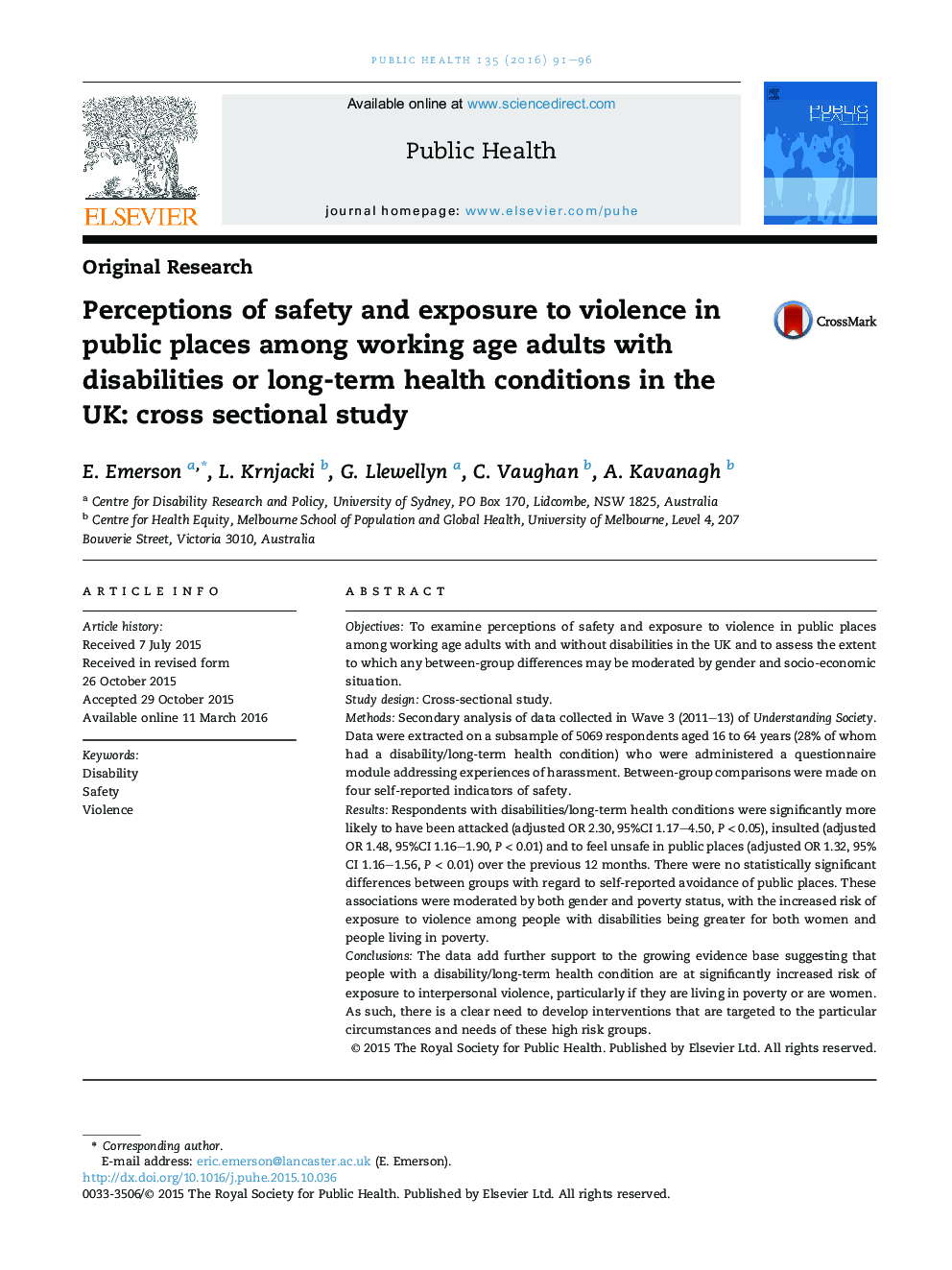| Article ID | Journal | Published Year | Pages | File Type |
|---|---|---|---|---|
| 1087289 | Public Health | 2016 | 6 Pages |
ObjectivesTo examine perceptions of safety and exposure to violence in public places among working age adults with and without disabilities in the UK and to assess the extent to which any between-group differences may be moderated by gender and socio-economic situation.Study designCross-sectional study.MethodsSecondary analysis of data collected in Wave 3 (2011–13) of Understanding Society. Data were extracted on a subsample of 5069 respondents aged 16 to 64 years (28% of whom had a disability/long-term health condition) who were administered a questionnaire module addressing experiences of harassment. Between-group comparisons were made on four self-reported indicators of safety.ResultsRespondents with disabilities/long-term health conditions were significantly more likely to have been attacked (adjusted OR 2.30, 95%CI 1.17–4.50, P < 0.05), insulted (adjusted OR 1.48, 95%CI 1.16–1.90, P < 0.01) and to feel unsafe in public places (adjusted OR 1.32, 95%CI 1.16–1.56, P < 0.01) over the previous 12 months. There were no statistically significant differences between groups with regard to self-reported avoidance of public places. These associations were moderated by both gender and poverty status, with the increased risk of exposure to violence among people with disabilities being greater for both women and people living in poverty.ConclusionsThe data add further support to the growing evidence base suggesting that people with a disability/long-term health condition are at significantly increased risk of exposure to interpersonal violence, particularly if they are living in poverty or are women. As such, there is a clear need to develop interventions that are targeted to the particular circumstances and needs of these high risk groups.
